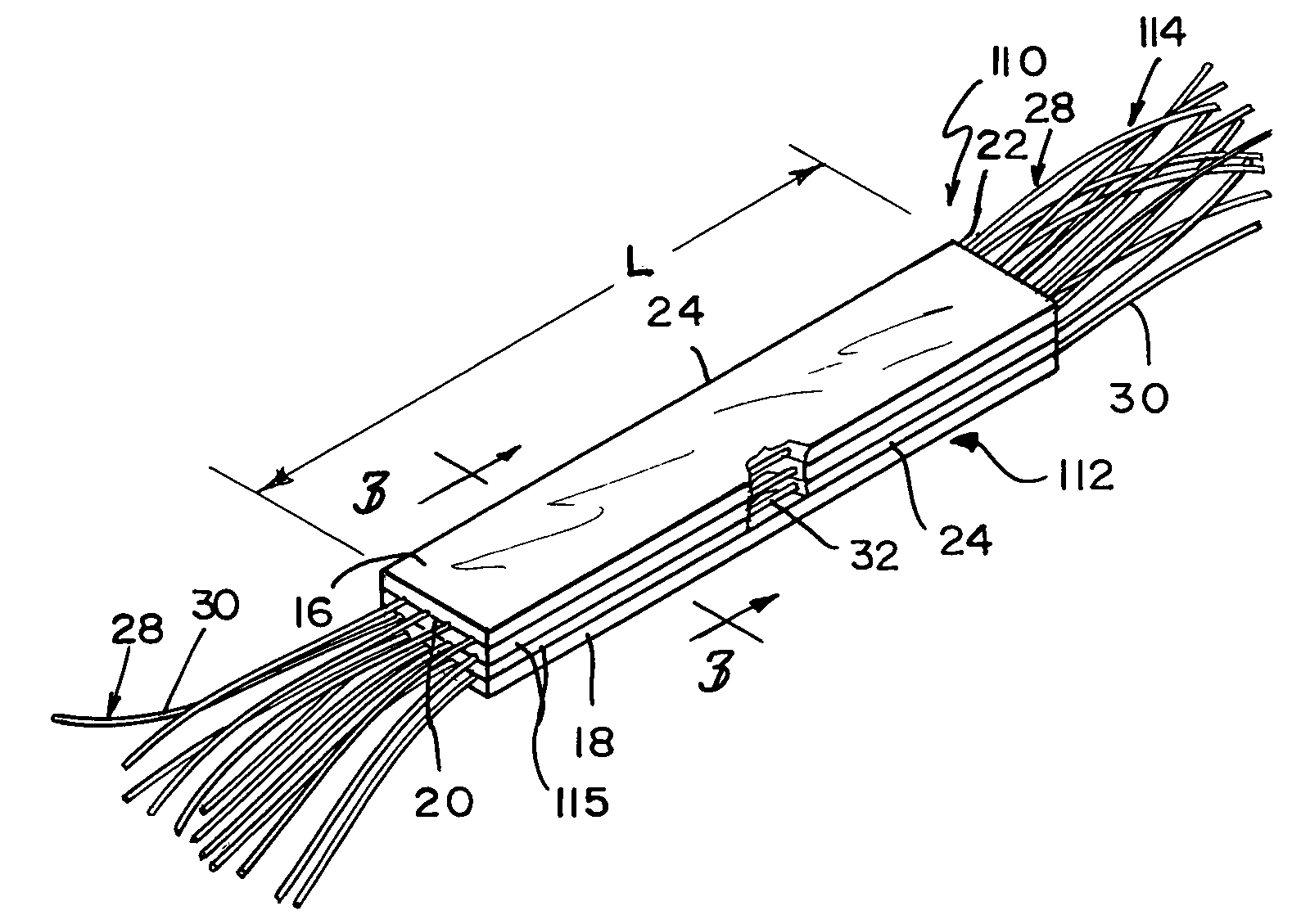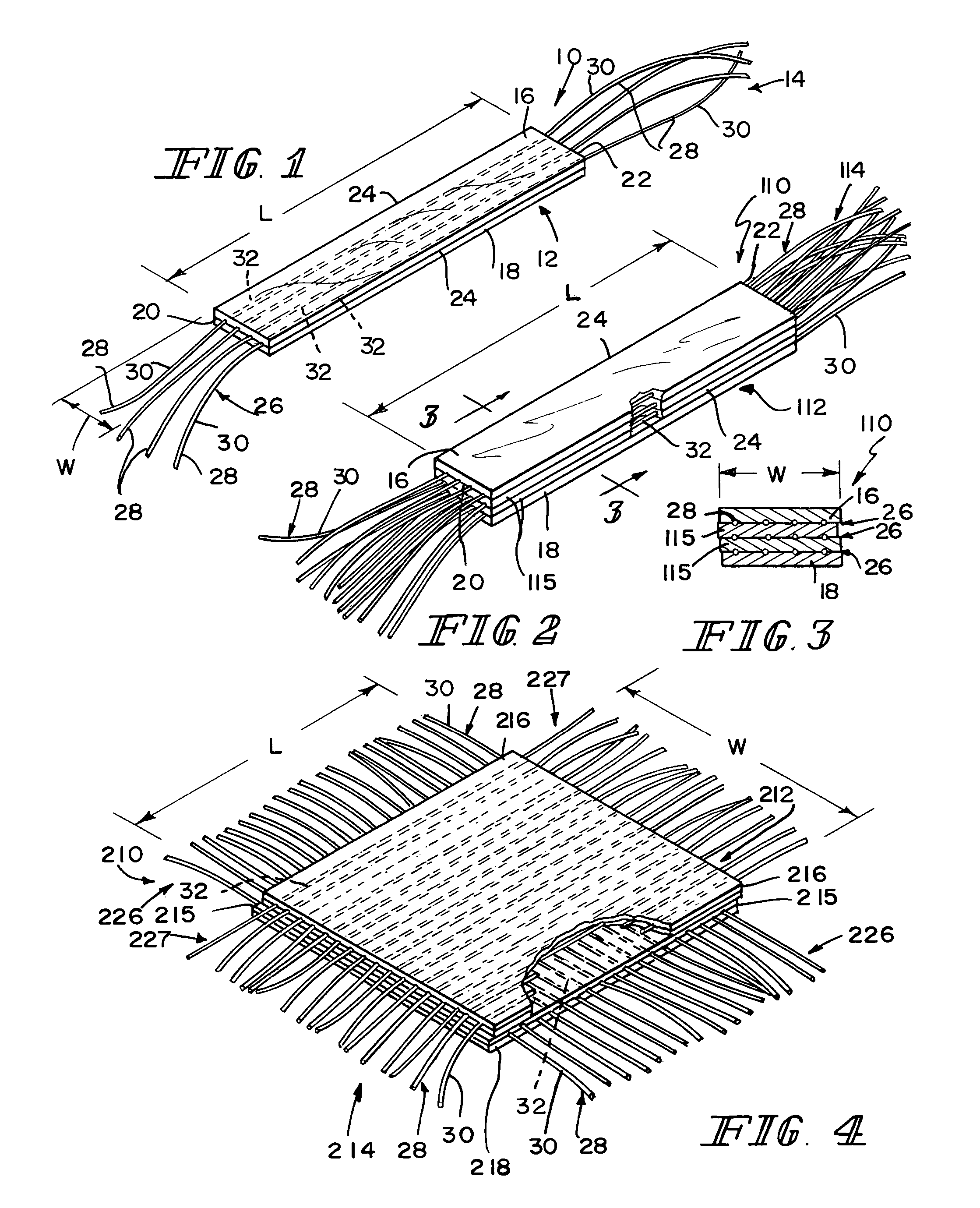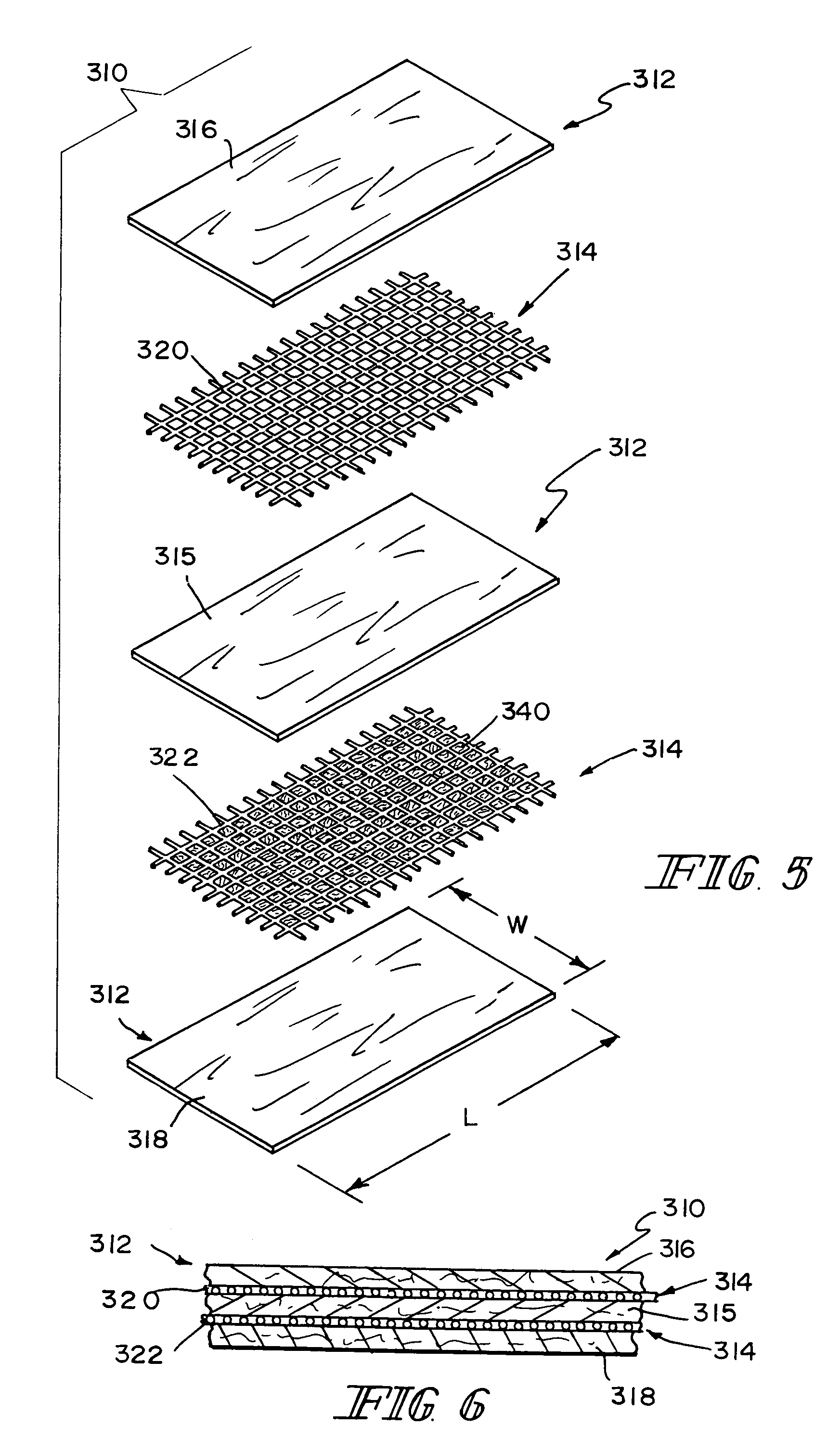Reinforced small intestinal submucosa
a submucosa and small intestinal technology, applied in the field of bioprosthetics, to achieve the effect of improving mechanical and handling properties
- Summary
- Abstract
- Description
- Claims
- Application Information
AI Technical Summary
Benefits of technology
Problems solved by technology
Method used
Image
Examples
example 2
[0039]A soaking test was performed to test resistance to delamination. Implants made as specified in Example 1 (both reinforced and non-reinforced) were cut into several strips 1 cm wide by 5 cm long, using a #10 scalpel blade. The strips were immersed in RO water, at room temperature for 1, 2, 5, 10, 20, 30, or 60 minutes. Delamination was detected at the edges of the implants by direct visual observation. All implants showed obvious signs of delamination at 1 hour. In non-reinforced implants, delamination was first visually observed between 40–60 minutes, whereas in the reinforced samples delamination was apparent between 20–30 minutes.
example 3
[0040]This example illustrates the enhanced mechanical properties of a construct reinforced with absorbable mesh. Preparation of three-dimensional elastomeric tissue implants with and without a reinforcement in the form of a biodegradable mesh are described. While a foam is used for the elastomeric tissue in this example, it is expected that similar results will be achieved with an ECM and a biodegradable mesh.
[0041]A solution of the polymer to be lyophilized to form the foam component was prepared in a four step process. A 95 / 5 weight ratio solution of 1,4-dioxane / (40 / 60 PCL / PLA) was made and poured into a flask. The flask was placed in a water bath, stirring at 70° C. for 5 hrs. The solution was filtered using an extraction thimble, extra coarse porosity, type ASTM 170-220 (EC) and stored in flasks.
[0042]Reinforcing mesh materials formed of a 90 / 10 copolymer of polyglycolic / polylactic acid (PGA / PLA) knitted (Code VKM-M) and woven (Code VWM-M), both sold under the tradename VICRYL ...
example 4
[0045]Lyophilized 40 / 60 polycaprolactone / polylactic acid, (PCL / PLA) foam, as well as the same foam reinforced with an embedded VICRYL knitted mesh, were fabricated as described in Example 3. These reinforced implants were tested for suture pull-out strength and compared to non-reinforced foam prepared following the procedure of Example 3.
[0046]For the suture pull-out strength test, the dimensions of the specimens were approximately 5 cm×9 cm. Specimens were tested for pull-out strength in the wale direction of the mesh (knitting machine axis). A size 0 polypropylene monofilament suture (Code 8834H), sold under the tradename PROLENE (by Ethicon, Inc., Somerville, N.J.) was passed through the mesh 6.25 mm from the edge of the specimens. The ends of the suture were clamped into the upper jaw and the mesh or the reinforced foam was clamped into the lower jaw of an Instron model 4501(Canton, Mass.). The Instron machine, with a 20 lb load cell, was activated using a cross-head speed of 2....
PUM
| Property | Measurement | Unit |
|---|---|---|
| bed temperature | aaaaa | aaaaa |
| angle | aaaaa | aaaaa |
| size | aaaaa | aaaaa |
Abstract
Description
Claims
Application Information
 Login to View More
Login to View More - R&D
- Intellectual Property
- Life Sciences
- Materials
- Tech Scout
- Unparalleled Data Quality
- Higher Quality Content
- 60% Fewer Hallucinations
Browse by: Latest US Patents, China's latest patents, Technical Efficacy Thesaurus, Application Domain, Technology Topic, Popular Technical Reports.
© 2025 PatSnap. All rights reserved.Legal|Privacy policy|Modern Slavery Act Transparency Statement|Sitemap|About US| Contact US: help@patsnap.com



